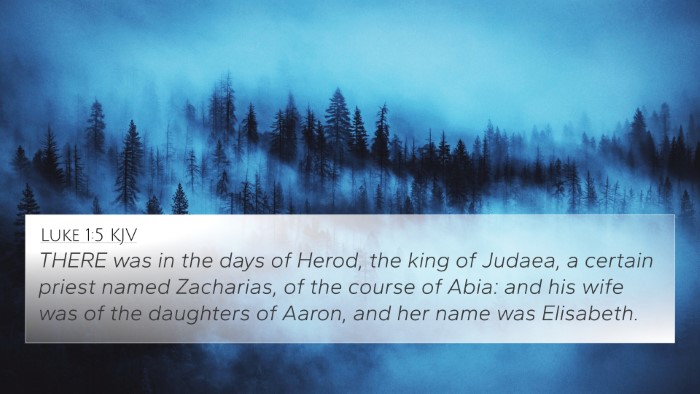Meaning and Interpretation of Nehemiah 12:4
Nehemiah 12:4 reveals the names of some key leaders from the priestly families who returned from the Babylonian captivity. This verse states:
"The chief of the priests, and of their brethren, was Jeshua; and the second was Joiakim."
Summary of Insights
The context of Nehemiah 12 involves the dedication of the wall of Jerusalem and highlights the importance of preserving the priestly lineage and service. This verse mentions significant figures among the priests, emphasizing their leadership roles within the restored community.
Commentary Insights
-
Matthew Henry: Henry emphasizes the significance of the priests' lineage, noting that their roles were not only religious but also foundational for the rebuilding of the Jewish nation. He stresses the importance of recognizing and honoring the leaders who played pivotal roles in spiritual restoration.
-
Albert Barnes: Barnes points out that the listing of these names serves to connect the contemporary worship of God with the ancient practices of the Jewish faith. He suggests that such continual acknowledgment helps solidify the community’s identity in relation to God’s covenant.
-
Adam Clarke: Clarke offers a detailed analysis of the significance of each name. He notes that Jeshua is identified with the high priestly line, which fulfills the prophetic role of priests serving in the temple worship, and Joiakim follows to maintain a continuity in leadership.
Bible Verse Cross-References
Understanding Nehemiah 12:4 also involves examining related scripture to grasp its full implications:
- Ezra 3:2: Discusses the return of the exiles and the role of Jeshua in rebuilding the altar, representing restoration.
- Haggai 1:1: Mentions the same priestly leader, showing the continuity in the prophetic call for rebuilding.
- Zechariah 3:1-10: Offers a prophetic vision about Joshua (Jeshua) the high priest, indicating Jesus as the ultimate high priest.
- 1 Chronicles 6:4-15: Provides a genealogy of the priests, establishing their legitimate lineage.
- Malachi 2:1-9: Discusses the covenant with Levi and the responsibilities of the priests, reinforcing their significance in Israel.
- Lamentations 5:12: A cry for the restoration of the priestly service reflecting on the devastation of Jerusalem.
- Nehemiah 10:8: Reinforces the commitment of the priests to uphold the laws of God after the exile.
Thematic Bible Verse Connections
Nehemiah 12:4 connects with broader themes in scripture that relate to leadership, restoration, and covenant:
- Leadership and Responsibility: The mention of Jeshua and Joiakim highlights the role of leaders in spiritual restoration, paralleling New Testament teachings on spiritual leadership (1 Timothy 3).
- Restoration of Worship: The reconstruction of the Jewish community is rooted in worship, echoing themes found in Psalms (such as Psalm 122) where the importance of worship and unity is emphasized.
- Covenantal Relationships: The priests’ lineage reflects God's unbroken covenant with Israel, which is echoed in the New Testament, chiefly through references to Jesus as the high priest (Hebrews 5:6).
Conclusion
Nehemiah 12:4 is pivotal in understanding not just the historical context of the Jewish return from exile but also the theological implications for the continuity of worship and priesthood in Israel. This verse, when explored through various commentaries, sheds light on the importance of leadership in faith communities, the significance of restoration in worship, and the call to maintain a covenantal relationship with God.
Understanding Bible Cross-References
Using tools for Bible cross-referencing enhances our understanding of scripture. By identifying connections between verses, we can see a grand narrative woven throughout the Bible. Here are strategies for effective cross-referencing:
- Utilize a Bible concordance: Helps in finding verses related to specific words and themes.
- Employ a Bible cross-reference guide: These guides provide helpful relationships between various scriptures.
- Practice cross-reference Bible study: Analyze how different verses speak about the same themes or events.
- Explore a cross-reference Bible system: Many modern Bibles come with built-in tools for cross-referencing.
- Engage with comprehensive Bible cross-reference materials: These can provide deeper insights into how verses relate across both Testaments.



